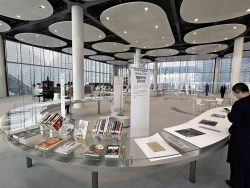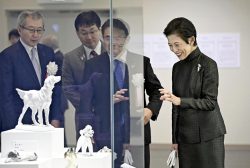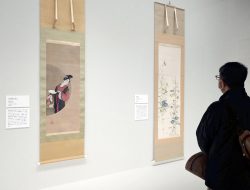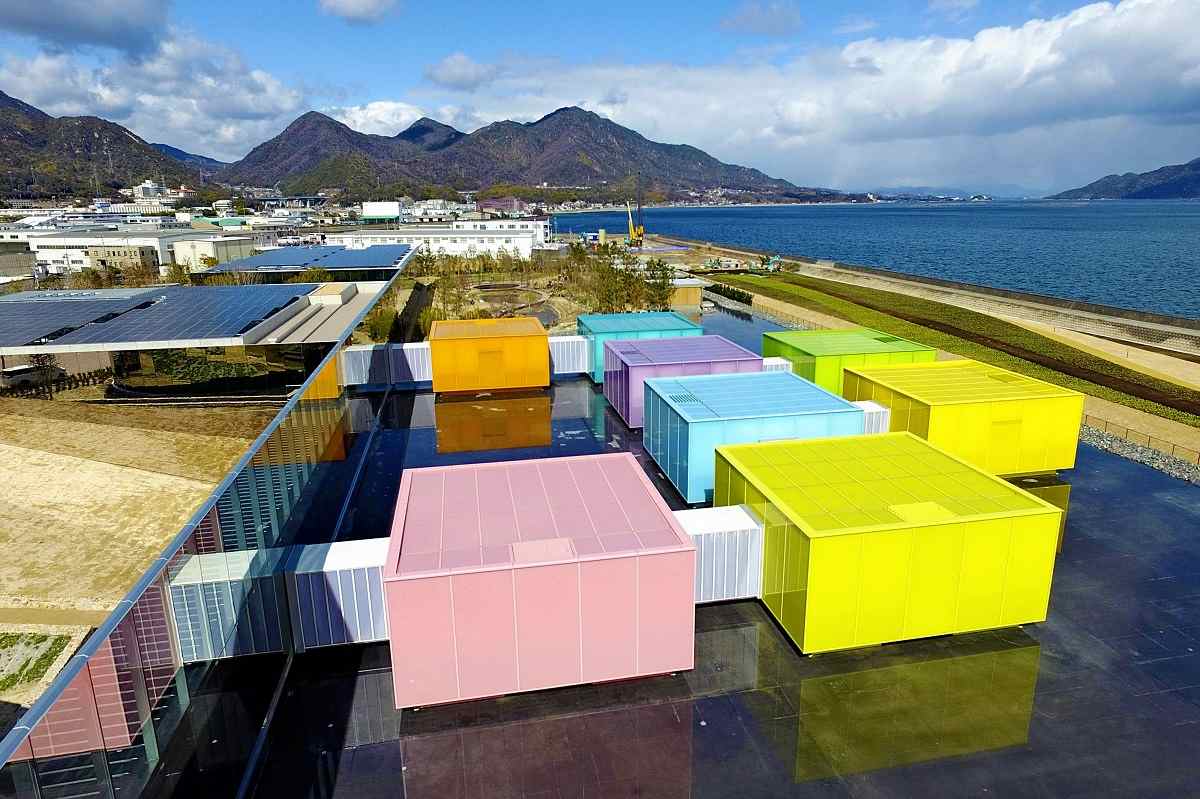
Colorful movable galleries at the Simose Art Museum in Otake, Hiroshima Prefecture
10:50 JST, April 27, 2023
HIROSHIMA — The Simose Art Museum, the first art museum in Otake, Hiroshima Prefecture, has opened to a delighted public.
The museum was designed by world-famous architect Shigeru Ban, 65, under the concept of “looking at art amid art,” and offers a space that is itself highly aesthetic, such as in its colorful, movable galleries. The museum complex also includes villa-style accommodations and a French restaurant, raising hopes that it could be a new tourist hub.
Marui Sangyo Co., a Hiroshima-based company that manufactures and sells building materials, purchased a 4.6-hectare plot facing the Seto Inland Sea from the prefecture and set in motion the construction of the museum, which opened on March 1. The museum is currently exhibiting traditional Japanese dolls and glass works created by French artist Emile Galle, all collected by the Shimose family, which founded the company. By the end of March, some 7,000 visitors had come to the museum.
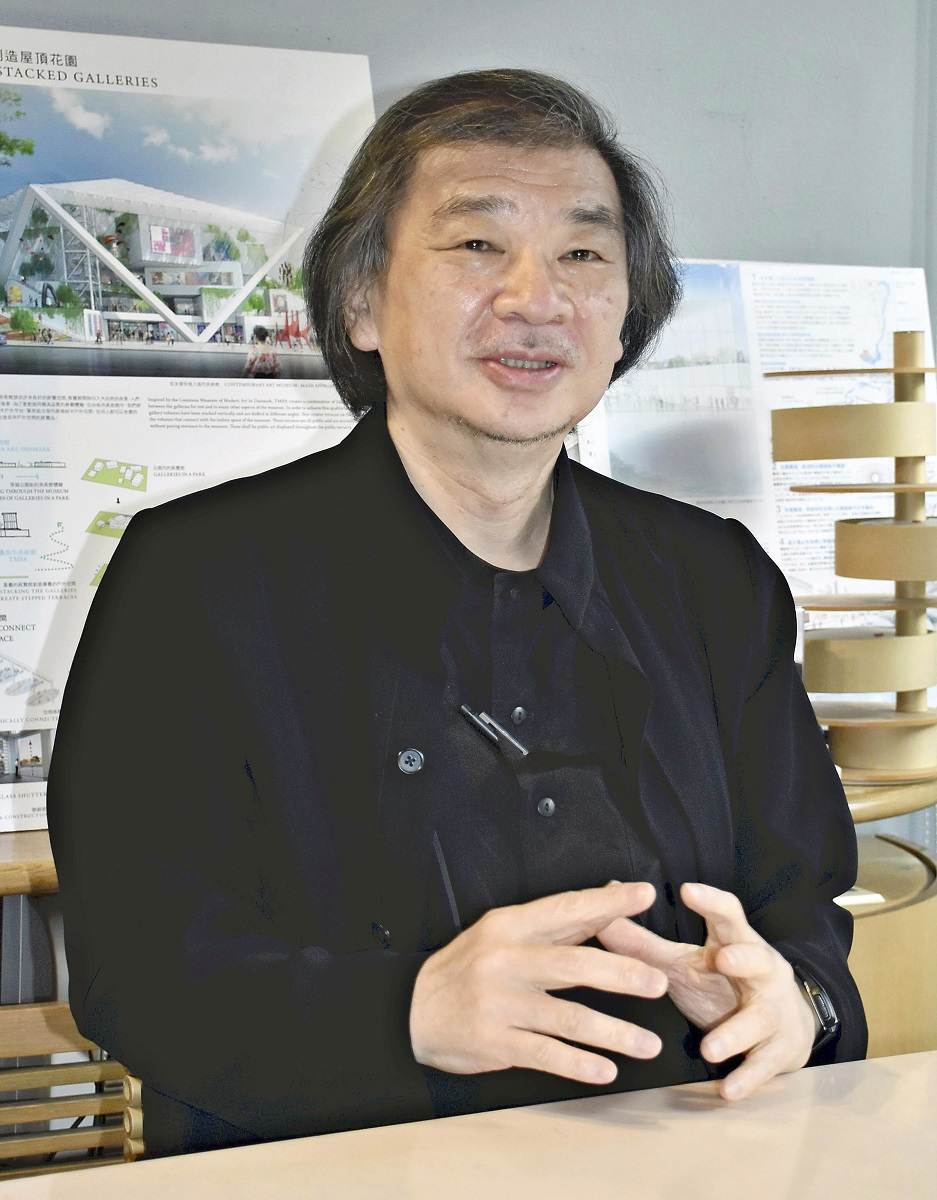
Shigeru Ban
The museum’s most striking feature is its movable glass galleries that stand over a shallow pool of water. There are eight such box-shaped galleries, each in a different candy-color finish. They can be rearranged by raising the water level and floating them.
Ban said he was inspired by the Seto Inland Sea, where there are many small islands.
“By changing the placement of the galleries, it is possible to offer repeat visitors new discoveries and surprises,” he added.
“Rearranging galleries takes a week or two, so we are now considering how often we should do it, but I hope we can demonstrate the feature sometime,” said Fumihiko Tanifuji, the museum’s deputy director.
And as for humidity, the bane of much art, the museum is fending it off with individual air conditioner units for each gallery room.
The entrance building, which houses the museum shop, is noted for its arched beams that resemble the trunks and spreading branches of large trees. Additionally, a corridor linking the building and the static exhibition room is glass-walled, allowing visitors to see the Seto Inland Sea from indoors.
The glass of the corridor’s walls has a mirror-like coating on the outside, creating an exterior that reflects the sea and mountains and blends into the surrounding landscape.
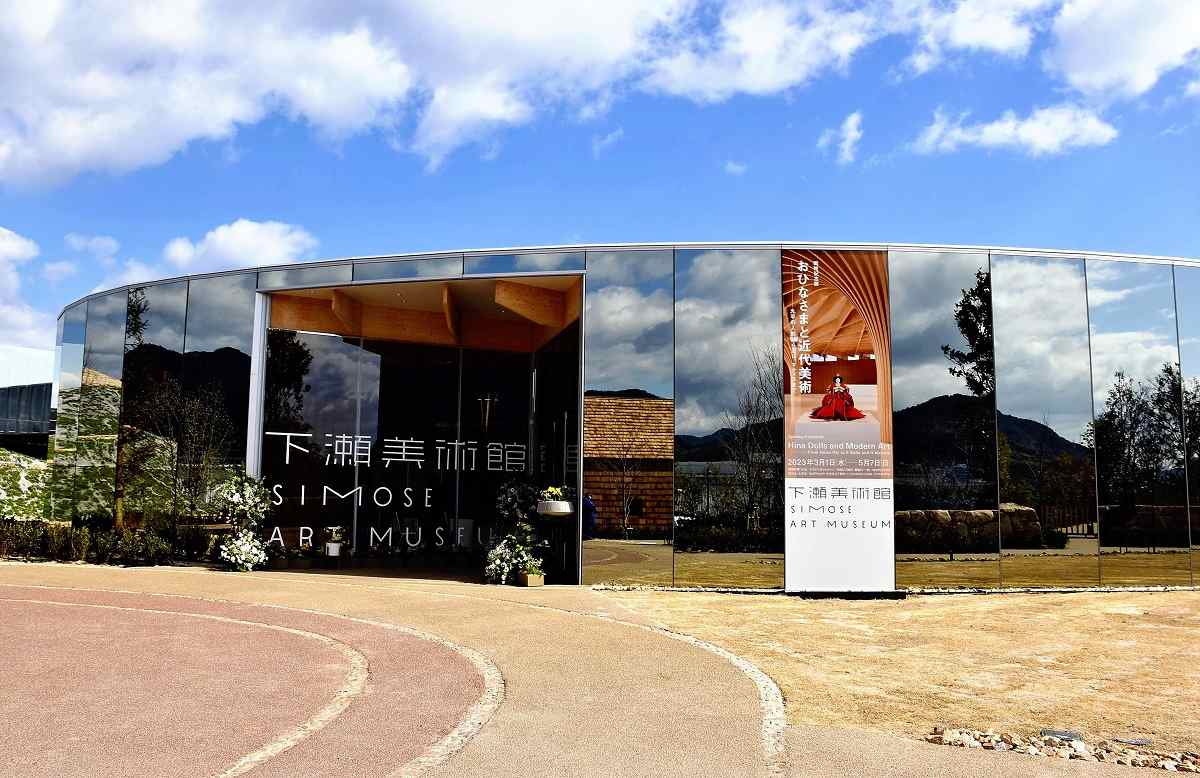
The museum’s glass-walled entrance building
“Many art museums are monochrome buildings in black or white. I wanted to diminish [the museum’s] presence to make the most of a landscape so rich in nature,” Ban said, explaining why he chose to use reflective glass.
To make good use of the large premises, arrangements were also made for a garden, a French restaurant and 10 villas that can be rented separately. The entire complex is designed to be a space where visitors can appreciate art and food at their leisure.
“I hope it will become a new place of interest that connects Hiroshima and Yamaguchi prefectures,” Ban said.
The opening exhibition featuring traditional hina dolls, glass works by Galle and Western paintings runs through May 7.
For more information, visit https://simose-museum.jp/;
"Culture" POPULAR ARTICLE
-

Van Cleef & Arpels Dazzles with Art Deco Artisanry at Tokyo Exhibit
-

Disney’s ‘Twisted-Wonderland’ Animated Series Puts Villains in Spotlight: New Show Features School Inspired by Classic Disney Films
-

Japan Plans to Distribute Manga Overseas Via New Platform
-

Ayumi Hamasaki’s Shanghai Concert Canceled Day Before Schedule as Part of Beijing Backlash
-

‘The World Masterpiece Theater Series’ Celebrates 50 Years; Animator Looks Back on Creating Anime Classics
JN ACCESS RANKING
-

Keidanren Chairman Yoshinobu Tsutsui Visits Kashiwazaki-Kariwa Nuclear Power Plant; Inspects New Emergency Safety System
-

Imports of Rare Earths from China Facing Delays, May Be Caused by Deterioration of Japan-China Relations
-

University of Tokyo Professor Discusses Japanese Economic Security in Interview Ahead of Forum
-

Japan Pulls out of Vietnam Nuclear Project, Complicating Hanoi’s Power Plans
-

Govt Aims to Expand NISA Program Lineup, Abolish Age Restriction


